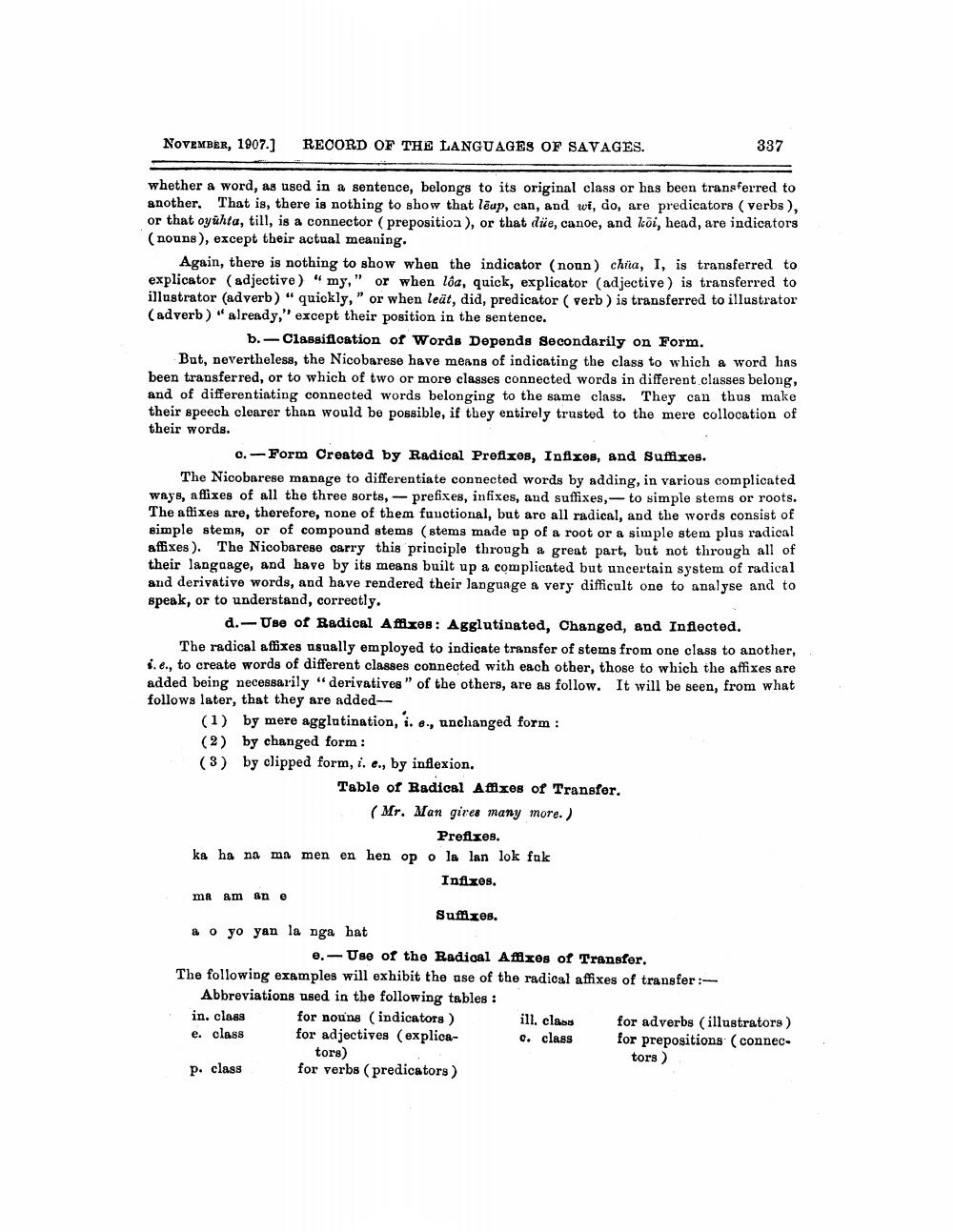________________
NOVEMBER, 1907.)
RECORD OF THE LANGUAGES OF SAVAGES.
337
whether a word, as used in a sentence, belongs to its original class or has been transferred to another. That is, there is nothing to show that lēap, can, and wi, do, are predicators (verbs), or that oyühta, till, is a connector (preposition ), or that düe, canoe, and koi, head, are indicators (nouns), except their actual meaning.
Again, there is nothing to show when the indicator (nonn) chia, I, is transferred to explicator (adjective) "my," or when loa, quick, explicator (adjective) is transferred to illustrator (adverb)" quickly," or when leät, did, predicator ( verb ) is transferred to illustrator (adverb)" already," except their position in the sentence.
b.- Classifloation of Words Depends Secondarily on Form. But, nevertheless, the Nicobarese have means of indicating the class to which a word has been transferred, or to which of two or more classes connected words in different classes belong, and of differentiating connected words belonging to the same class. They can thus make their speech clearer than would be possible, if they entirely trusted to the mere collocation of their words.
C. - Form Created by Radical Prefixes, Infixes, and Suffixes. The Nicobarese manage to differentiate connected words by adding, in various complicated ways, aflixes of all the three sorts, - prefixes, infixes, and suffixes,-to simple stems or roots. The affixes are, therefore, none of them functional, but are all radical, and the words consist of simple stems, or of compound stems (stems made up of a root or a simple stem plus radical affixes). The Nicobarese carry this principle through a great part, but not through all of their language, and have by its means built up a complicated but uncertain system of radical and derivative words, and have rendered their language a very difficult one to analyse and to speak, or to understand, correctly.
d.-Use of Radical Affl.xos: Agglutinatod, Changed, and Inflected. The radical affixes usually employed to indicate transfer of stems from one class to another, s.e., to create words of different classes connected with each other, those to which the affixes are added being necessarily "derivatives of the others, are as follow. It will be seen, from what follows later, that they are added
(1) by mere agglutination, i..., unchanged form: (2) by changed form: (3) by clipped form, i. c., by inflexion.
Table of Radical Amixes of Transfer. (Mr. Man gires many more.)
Prefixes. ka ha na ma men en hen op o la lan lok fuk
Infizes. ma am an e
Sufizes. ao yo yan la nga bat
0.- Use of the Radical Anxos of Transfer. The following examples will exhibit the ase of the radical affixes of transfer :
Abbreviations used in the following tables : in. class for nouns (indicators )
ill. class for adverbs (illustrators) e. class for adjectives (explica
c. class for prepositions (connectors)
tors) for verbs (predicators)
p. class




